Plextor, a leading Storage solution provider, and a subsidiary company of LITE-ON, has been on the market since 1989. Their first ever SSD came to market is, PX-M1, in 2009, since then their product portfolio kept expanding. At times, they were one of the first well-known developer for meeting fastest standard SATA 3.0 6GB/s SSD in market, and from that moment on, they became one of the leading SSD developer worldwide. Introduced the first ever True-Speed Technology in SSD to ensure equal and reliable performance across the data levels.
Plextor marked its name in the category of NVMe (Non-Volatile Memory Express) based SSD with M8Pe, introduced in 2016, and has won wide recognition award from gaming industry. Plextor also highly recognized with their True speed and True protect technologies advancement, that also set new standard for NVMe based drives. Earlier 2018, the M9Pe series has been released, which comes in 3 different models; M9PeG(N), M9PeG and M9PeY.
Today, I am taking a look at the Plextor M9PeG 256GB NVMe PCIe M.2 SSD. The SSD comes in a capacity model of 256GB, having an interface protocol of M.2 with Gen 3×4 as the fastest gen to date. A drive with M.2280 form factor, TLC 3D NAND technology accompanied with a flagship Marvell88ss1093 controller guaranteed the ultra-fast and reliable results out of the box. The dimension measures at 80.00 x 22.80 x 4.70 mm and weighing at 13gm. It comes in three different capacities: 256GB, 512GB and 1TB models.
The Box and Accessories
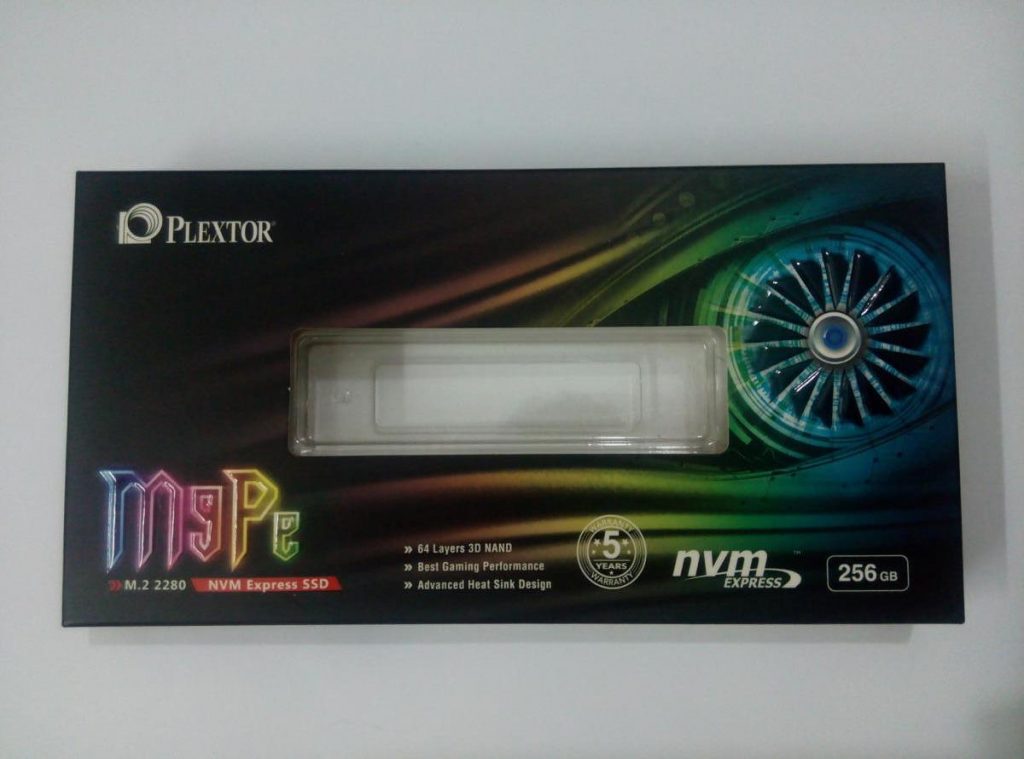

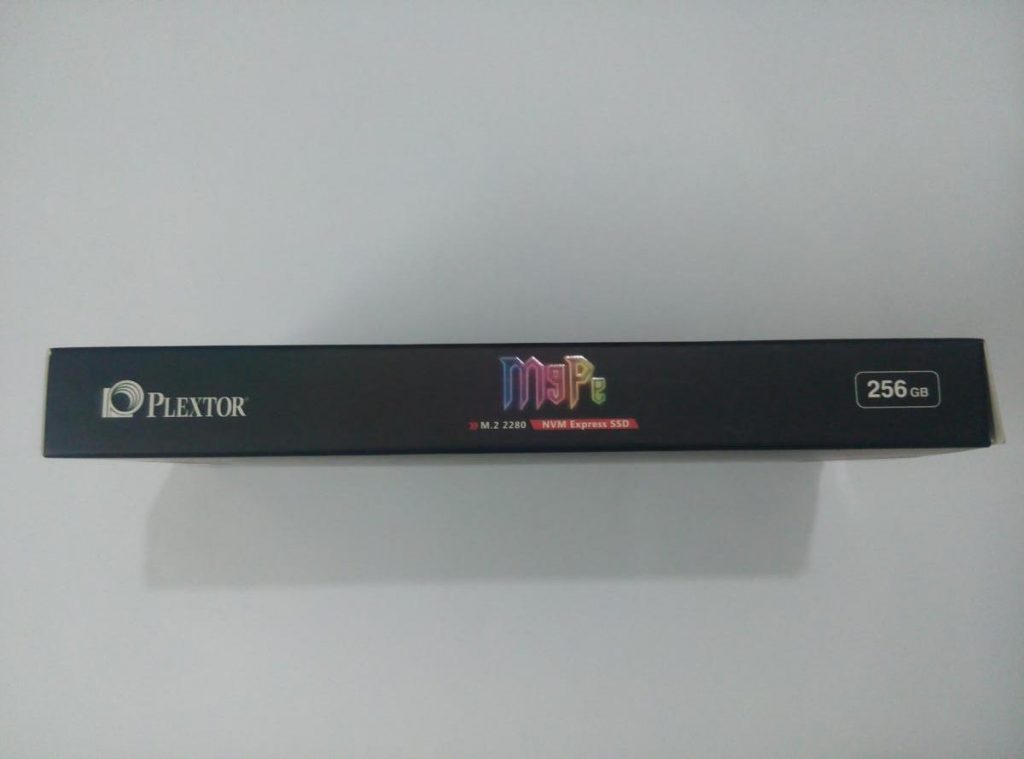
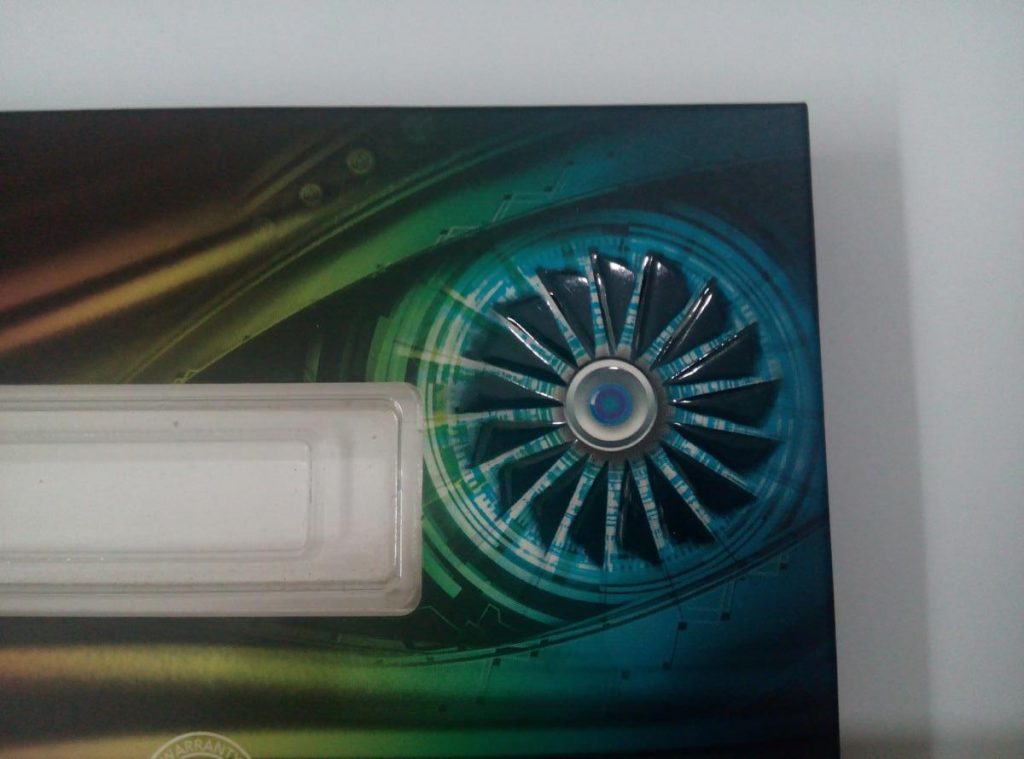
The SSD comes in a cardboard box, specifically designed for M9PeG. This box packaging is not entirely of premium grade. The 165mm wide box contains Plextor logo at top left corner, and Model No. being rainbow colors at lower part, alongside, some standout features, warranty and Capacity info is . The backside of the box is quite expected; the specifications we can witness down the side. The True speed and True protect logos are placed at bottom left corner, for your information, Plextor is the one who introduced True speed and True protect advancement in SSDs back in days.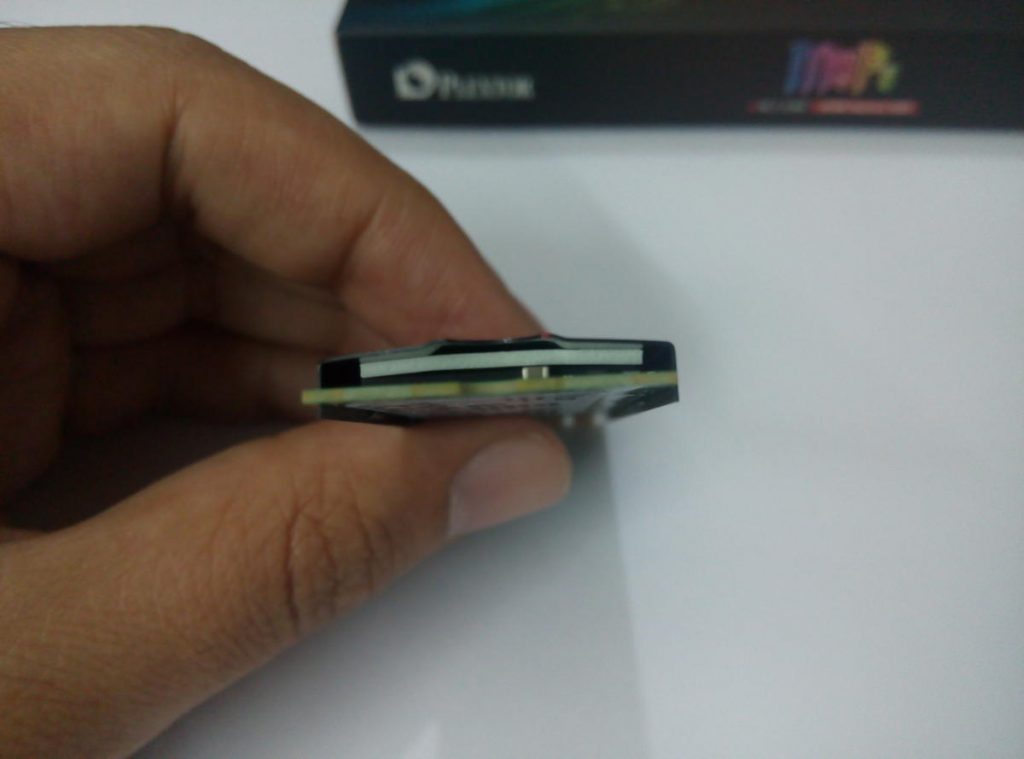
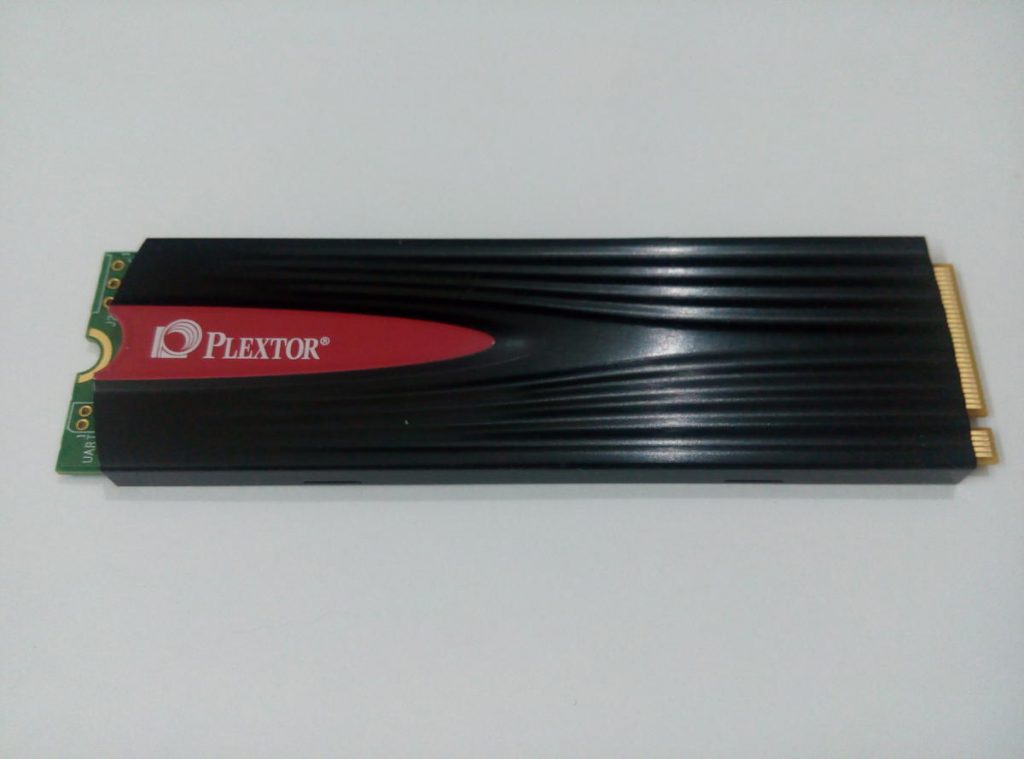
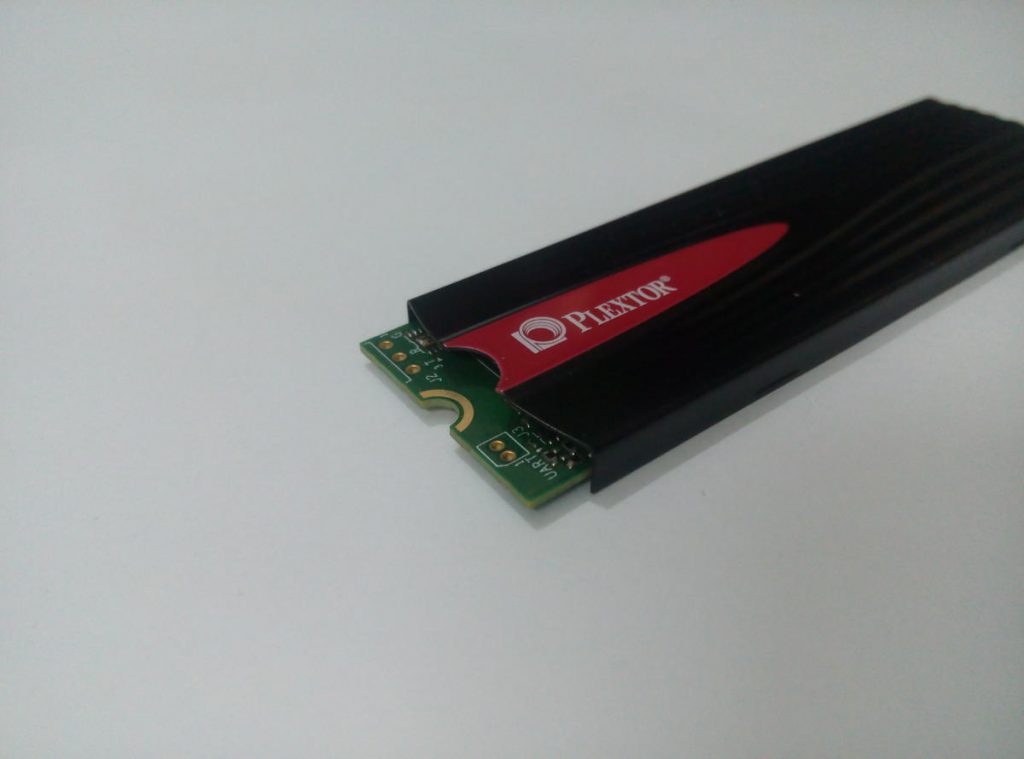


Looking at the top, the SSD has a great deal of black heatsink covering the entire PCB, has a logo on extreme left with red base. The SSD without Heatsink is 22mm wide and 80mm long, while the heatsink on PCB is about 76mm long. Featuring full black with slight red offering beautiful look on the SSD, that also matches a motherboard theme as well. The extreme right side of the drive has the M.2 M-Key in gold that goes right into m.2 slot on the motherboard, generally called M.2 interface protocol. The other end of the drive grips the standoff and by using a screw, users can align down the SSD.
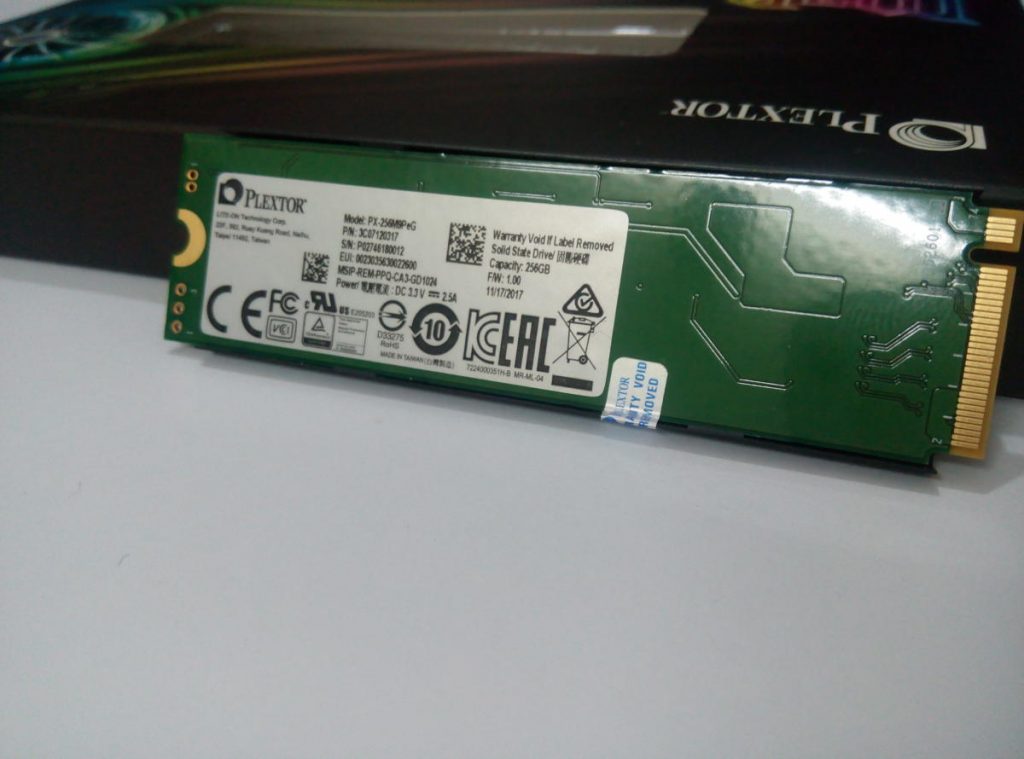
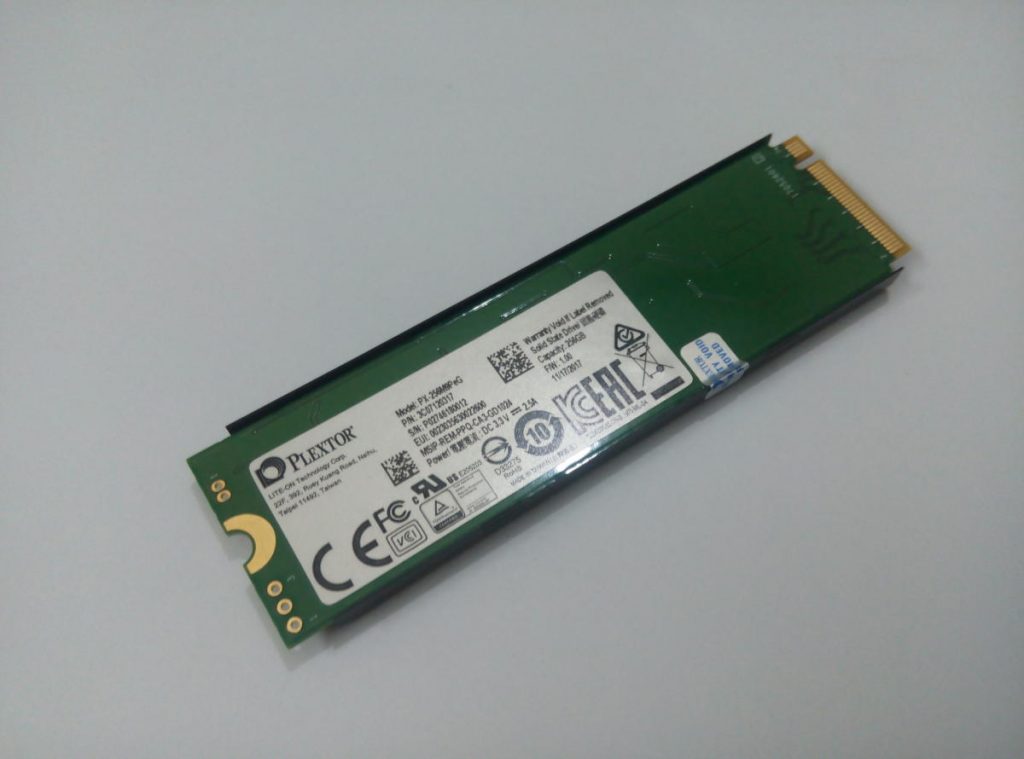
The drive has the simplest look at the backside. A huge white barcoded sticker contains tons of information on it includes, the Warranty void, company name, manufacturing region, model, serial number and etc. There is a warranty void sticker, a very small one, attached over heatsink and PCB that if removed, won’t be able to claim the product. Furthermore, it’s a M9PeG uses full green PCB, as seen in other M.2 drives as well.
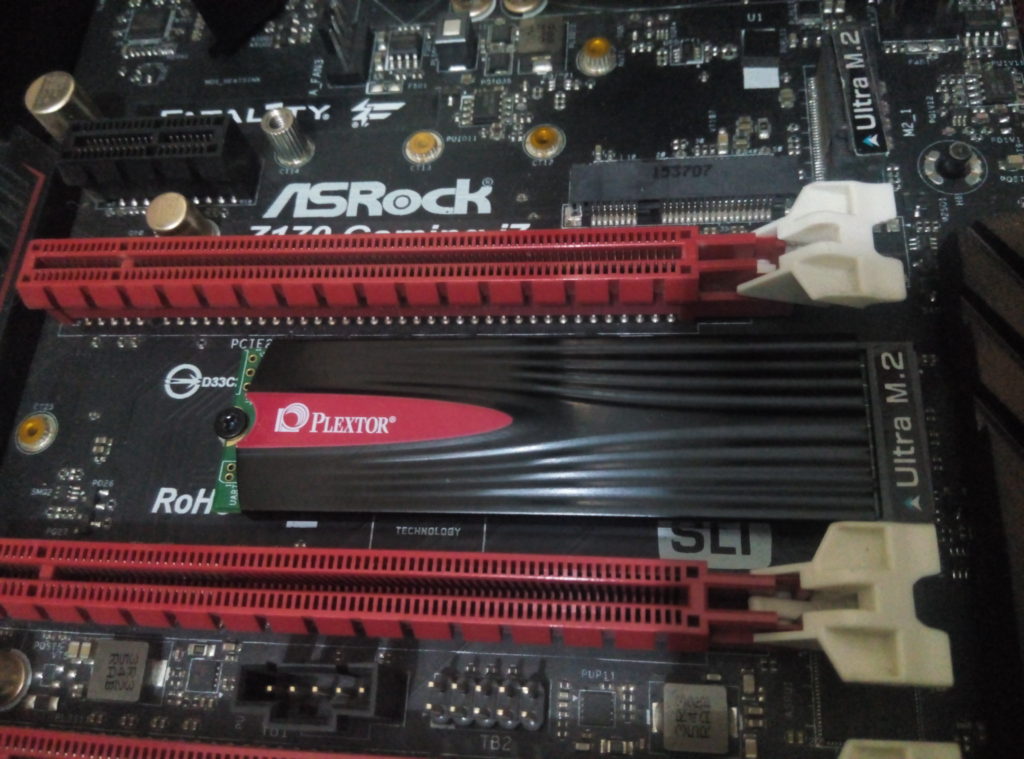
The final look of an SSD after being installed is, nonetheless, satisfactory as it’s matching with my motherboard’s theme. The truth is, it would work same way for most of the motherboards.
Heatsink vs. Non-Heatsink SSD
This is many people’s question, and tons of discussion find on internet, So, we could add a few words in a simplest manner. During the SSD operations, thermal behavior of SSD changes as the workload applies. There are a few factors effecting thermal behavior to change; the amount of load throws at it and the quality of heatsink. The higher the workload given to it, more resources will be used hence rise in temperature and more heat will be generated. Which afterwards, effects on performance.
Now, if the M.2 drive is equipped with a quality heatsink using thermal pads, the drive would easily maintain the acceptable temperatures at a preset level, given the heatsink is of high quality and specifically designed for the said purpose. As a result, less heat would generate and stable work environment will process. Also, let’s face the truth, not every heatsink is designed to work efficiently for example, if a heatsink able to keep the temperature of an SSD under 75C, it said to be a good one, however, anything crossing 80c would consider as a bad design.
On the other hand, a non-heatsink NVMe drive not guarantee its thermal stability, especially during heavy operations. It might go beyond the limit (which has been seen in most cases) and soon begins to throttle that eventually resulting in operations being delayed. Even some SSDs do crosses 90c, which in the long run, probably kills the drive or at least push down the performance.
PlexNitro –Software Support
In addition to the highest compatibility, Plextor offers an exclusive Cache acceleration technology, PlexNitro, which helps storage drive to accelerate the Read & Write speed to completely new levels, especially during the heavy tasks given to it. A TLC SSD offers triple layer Cell processing which in general has a slothful writing speed, but according to Plextor’s website, with a pre-enabled Cache Acceleration program, the write speed significantly improves and delivers a stable all-around performance. The PlexNitro opens up more room for high performance and literally, uncover the paramount capabilities of the SSD. Keep in mind, this exclusive performance boosting technology, specifically, designed for the Plextor SSDs therefore, only Plextor SSD would get benefit from this technology.
Test Bench
- Asrock Z170 Professional Gaming motherboard
- Intel Core i7 6700K 4.0 GHz
- Kingston HyperX 16GB DDR4 2666 MHZ CL15
- Intel HD 4600 Graphics
- Plextor M9PeG 256GB PCIe NVMe M.2 drive (Reviewing Sample)
- Seagate 3TB 7200 RPM Hard drive
- Samsung 850 EVO 256GB SATA III SSD
- Enermax Revo X’T II 650W GOLD PSU
- Noctua NH-U14S Air Cooler
- Corsair Obsidian 750D Full-Tower Case
Program used in Tests:
- AS SSD 2.0v Benchmark
- Crystal DiskMark 5.0v Benchmark
- HDD Tune pro 5.50v
- PC Mark 8
- Copy Test (Real World)
- Winrar 5.20v (Uncompression Test)
Procedure:
Testing a consumer grade NVMe drive involves great amount of synthetic as well as real world programs. We looked towards synthetic benchmark on our first go, which reveals the read and write speed and also, the access time (boot times/loading times). The first three software listed above were used to evaluate SSD’s performance synthetically. However, for precise and real world performance and relative strength, we picked some real world usage workload, that are also included in our methodology. This would especially help us understanding the actual performance the reviewing sample has got.
As for comparison, unfortunately, we couldn’t arrange any equivalent NVMe M.2 drive. But we are comparing it with the SATA III SSD instead. The purpose is to help consumers comprehend the technological improvement NVMe M.2 over a matured SATA III SSD. The SSD in Comparison is Samsung 850 EVO 250GB 2.5” SATA III SSD.
Results:
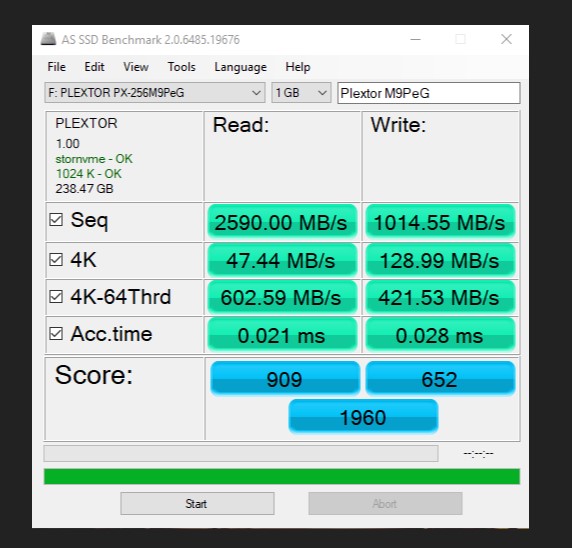
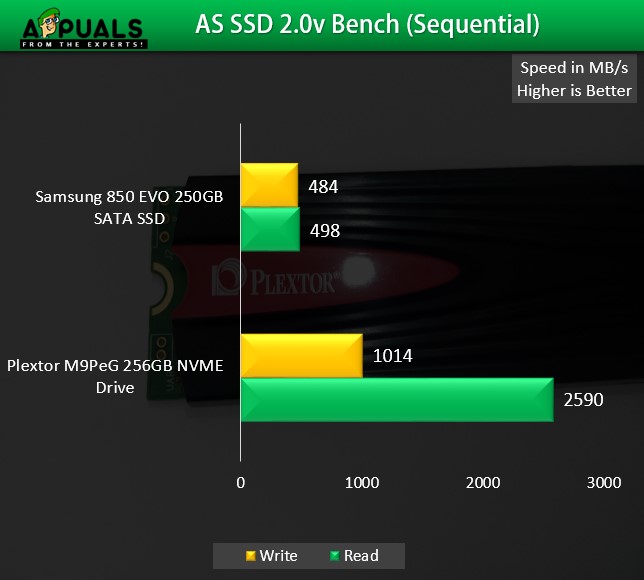
The AS SSD benchmark and it started with AS SSD benchmark, which is toughest benchmark to bring the desire results because it uses uncompressed form of data to manufacture results.
In AS SSD benchmark, M9PeG boasted a high 2590 MB/s sequential read and 1014 MB/s Sequential write. With the lowest 0.021 ns access time and better overall score, while Samsung 850 EVO with SATA III technology only achieved 494 Mb/s as sequential read at an access rate of 0.066.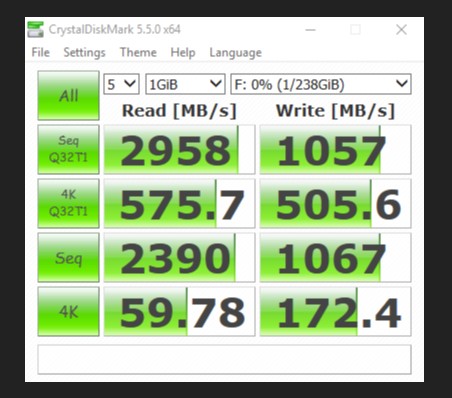
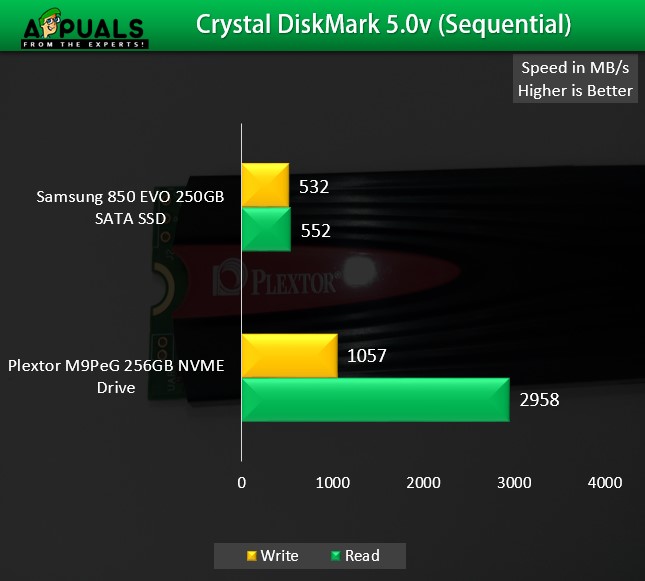
Next is the Crystal DiskMark benchmark. Where Plextor M9PeG has maxed out the numbers with an aggressive 2958 MB/s read, while 1057 MB/s sequential write. Both the blocks further followed with same sequence. Here, the difference between a 2.5” SATA III SSD and NVMe M.2 SSD clarifies why NVMe development is so amazing.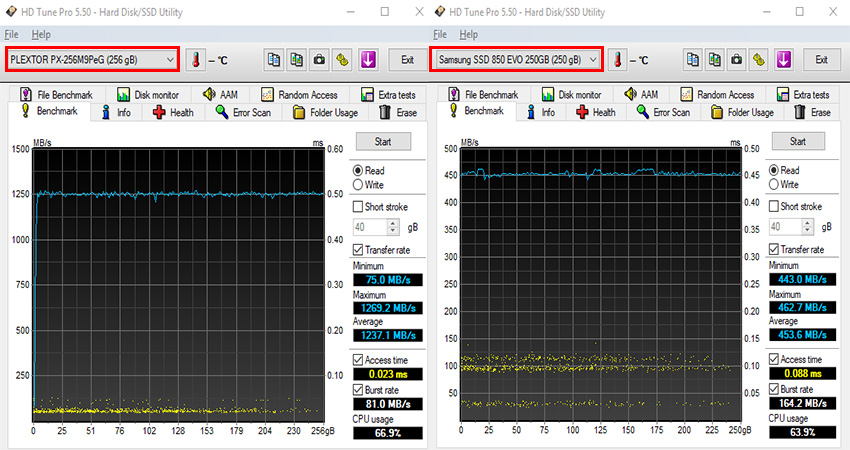
The HD tune Pro result is very simple. The transfer speed resulted around 1237 MB/s on average, while the access time is 0.023. On the other side, the Samsung 850 EVO only manages to peak out 453 MB/s at access time of 0.088 ns. Keep in mind the fact, NVMe is twice faster in synthetic benchmarks, so the aforementioned results are expected.
The PCMark 8 Storage test simulates disk activity by playing back a trace of storage activity recorded during actual use of applications from the Adobe Creative Suite, Microsoft Office and a selection of popular games. Idle time compression is avoided to make the benchmark behave more like real-world applications. PC Mark ver. 8 is one of the real world benchmark programs, that tests the storage unit thoroughly. In this application, M9PeG manages to produce 318.72 Mb/s Bandwidth with achieving score final score at 4891.
Copying-file Test
We expand the same process by copy some folders contains many files i.e. game setup contains uncompressed files. Additionally, we used HD movies folder for cross-testing. The methodology of this test is: to first copy the game setup and media folders from SSD to NVMe M.2, Then copy the file from the fast drive, M9PeG, and throw it back into the destination SSD, this time it’s Samsung 850 EVO for comparative performance analysis. The time took to copying the data from one drive to other will be recorded in the sheet plus, a small discussion on speed.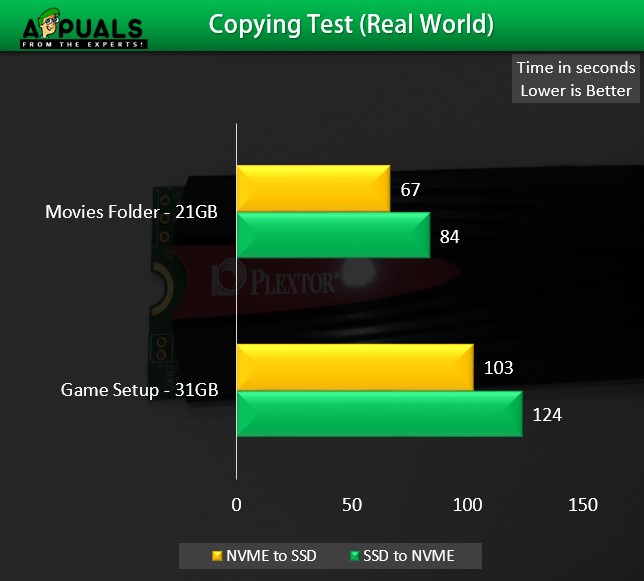
It took about 124 seconds to copy a 31GB Game setup folder from 850 EVO to M.2 SSD at an average speed of 350 MB/s. Keep in mind, the possible bottleneck of SATA III SSD being slow in the competition, on NVMe SSD is still present. With M.2 being source and destination both would replicate an entirely a different story. We copied the same file and throw into the Samsung 850 EVO SSD, while making M9PeG as source channel. As a result, it reduces the time i.e. 103 seconds to transfer the same folder at an average speed of 645 MB/s.
Copying speed and time consumption mostly depends on cross builds. With much better and faster source drive, the destination drive would produce far better read performance. Therefore, in order to achieve 700+ copying speed we definitely need the same or better model as source drive.
Uncompressing File Test
Next is the Uncompression test where M9PeG NVMe, 850 EVO SSD and 1TB Mechanical hard disk put into write test. A 4.45GB Media folder in a compressed form placed in sample drive and begin to uncompressing the given file, that took around 30 seconds for NVMe to uncompressed the files/folder. However, when the same task’s been given to Samsung 850 EVO 256GB SSD and Seagate 1TB HDD, that replicated around 42 and 100 seconds, respectively.

Another, yet a large compressed file brought to test the M.2 SSD and compared it with Samsung 850 EVO and Seagate 1TB SATA HDD. Arranged the gaming files in compressed version of 12.4GB contained a game setup. Started off with uncompressing in M9PeG which took 68 seconds (1 minute and 8 seconds), while Samsung 850 EVO passed this test with 90 seconds (1 minute and 30 seconds) and HDD has not even in the sight of fast drives, managed to produce the files in 313 seconds (5 minutes and 13 seconds) showing aging mechanical function on board.
In our both tests, there is some difference between SATA III SSD and NVMe drive, though it might be imperceptible for some. Since most of the people might be looking for magical figures, especially when go from old SATA to high tech, NVMe. Yes, result does show NVMe is 4x better than Mechanical hard disk. We also noticed that the difference between SSD and NVMe drive gets even bigger as the file size increases. So it’s pretty safe to say that NVMe best suitable for heavier task/workloads.
Thoughts on Thermal Behavior
The crucial part of our observation is thermal readings. Let’s not forget on build as Plextor M9PeG being heatsink SSD that gives a much better thermally-controlled working condition than a non-heatsink unit. So given the objective, we applied various set of workloads on M9PeG like Transfer folders containing large files, uncompressing the game setup file and synthetic benchmark (Crystal DiskMark). Which produced a temperature reading of 72C with an average of 63C. Keep in mind, any NVMe SSD can sustained an optimal performance till 75C and exceeding the limit would result in down clock i.e. throttle.
First off the build is pretty decent. Being using TLC Toshiba 3D NAND technology, M9PeG offers highly durable M.2 drive with uncompromised speedy performance, having an interface protocol of M.2 with Gen 3×4 as the fastest gen to date. Appearance segment is just great; one of the best looking NVMe drives in the market. Not to mention the highly effective Plextor’s own heat sink installed to control the operating temperature. With pre-enabled advanced True Speed and True protect technologies, M9PeG promised a good speed and especially durability on top.
Coming to performance, the NVMe SSD with Marvell88ss1093 controller guaranteeing the high Sequential read and write speed being advertised on website. For 256GB model, company has claimed 3000 MB/s as read, while 1000 MB/s on write segment, which nearly has proved to be accurate. I mentioned ‘nearly’ because under my testing specs/procedure, it managed to obtained 2958 MB/s that’s marginally below to the advertised numbers. Write spectrum, on the other hand, does fulfilled the claim and even exceeding by 17 MB/s speed. So considering the claim, this product is almost mirroring it.
Despite quadruple speed in synthetic benchmark, the real world tells a slightly different story. M9PeG drive manage to established a slight lead against Samsung EVO SSD, but not that we could give it high numbers. The fact is, the old SSDs are somehow like getting closer to NVMe performance, shrinking the value of NVMe drive in high competitive market. Yet it’s leading our ranking charts and in heavier tasks, NVMe drive would perform much better. So, you’re all good in adding additional NVMe M.2 drive in your gaming rig. As for the thermal behavior, the Plextor’s heatsink was able to maintained the temp well within the limits of actual throttle condition, that suggest, at least, it has a good heatsink support. One thing I noticed and that also falls in negative is the lack of software support. Like plextool, plexturbo etc. In case you want to tweak or optimize the SSD, you cannot. They should’ve added this in the features.
The Plextor M9PeG has targeted big segments of offerings, mainly the performance with blazing fast speed in sequential read, and quality being the heatsink delivering an effective heat controlling shield. Plextor M9PeG 256GB at MSRP $109 is rather a steal, because you will find most of the SATA III SSD in that price, or even if you pay $20 more, that would still carry a much better value. Backed with 5 years’ manufacturer warranty, M9PeG secure one of the best deal around. If you’re looking for faster NVMe drive without overburdening your wallet, Plextor M9PeG 256GB PCIe NVMe SSD is Highly Recommended.
Plextor M9PeG 256GB PCIe NVMe M.2 Review
Highly Recommended - 8
8
Highly Recommended
Thanks! Do share your feedback with us. ⚡
How can we make this post better? Your help would be appreciated. ✍



